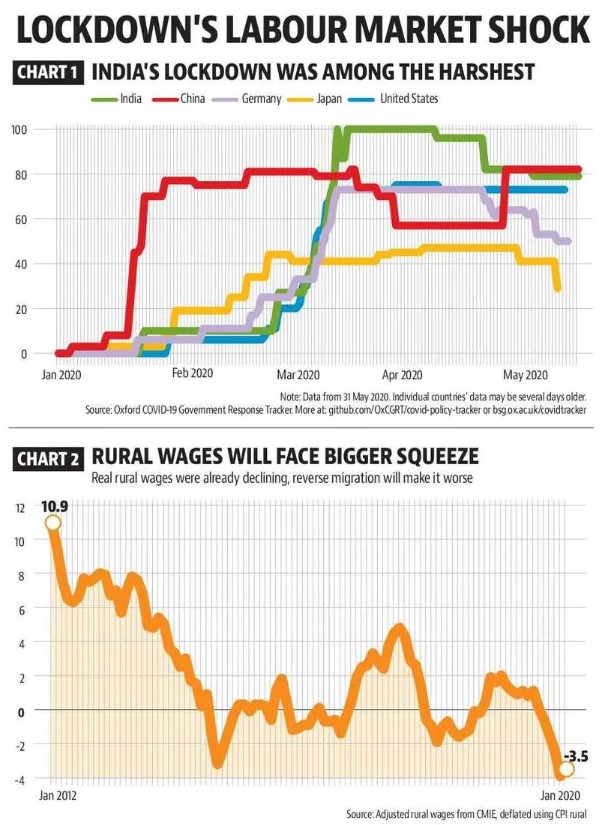Focus: GS-III Indian Economy
Why in news?
- The only high frequency indicators which are available for the period after the lockdown are the Purchasing Managers’ Indices (PMI).
- Both the manufacturing and services indices crashed to their lowest-ever values.
- Among the most visible economic impacts of the lockdown has been a massive reverse migration of workers to villages.
Economic Impact of Reverse Migration

- In 1957-58 less than 40% of non-farm jobs were located outside the village. This number increased to over 75% in 1983-84.
- It subsequently dipped and was around the 60% mark in 2015.
- The share of non-cultivation incomes has continuously increased during this period.
- Of the non-farm jobs located outside the village, 60% were located at least 50 kilometers away in 2008-09.
Interpreting the numbers
- Reverse migration also entails loss of income for migrant workers, and this can be very significant for poorer states.
- For example, migrant remittances had a share of 35% in Bihar’s gross state domestic product (GSDP).
- The unemployment rate was 6.1% according to the 2017-18 Periodic Labour Force Survey, the highest in four decades.
Impact
- The sudden exodus of migrants who have returned to their villages from the cities will push wages down even more.
- This will further squeeze earnings and subsequently demand.
- Weakness in demand may generate additional headwinds for revival of economic activity even in urban areas.
-Source: Hindustan Times



